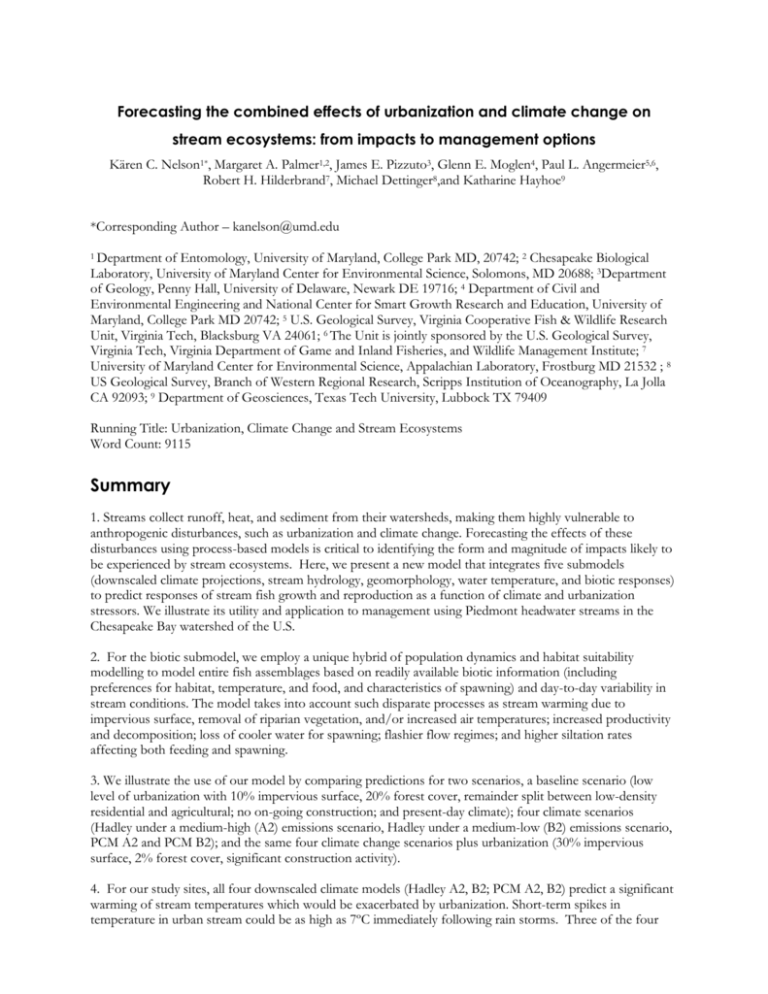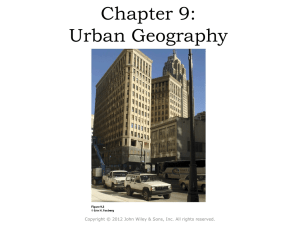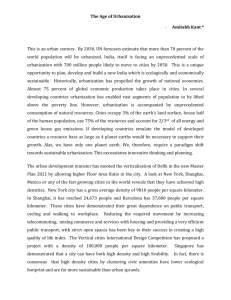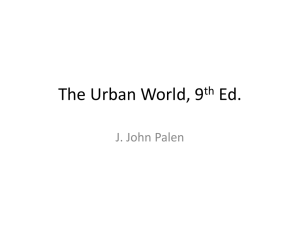Forecasting the combined effects of urbanization
advertisement

Forecasting the combined effects of urbanization and climate change on stream ecosystems: from impacts to management options Kären C. Nelson1*, Margaret A. Palmer1,2, James E. Pizzuto3, Glenn E. Moglen4, Paul L. Angermeier5,6, Robert H. Hilderbrand7, Michael Dettinger8,and Katharine Hayhoe9 *Corresponding Author – kanelson@umd.edu 1 Department of Entomology, University of Maryland, College Park MD, 20742; 2 Chesapeake Biological Laboratory, University of Maryland Center for Environmental Science, Solomons, MD 20688; 3Department of Geology, Penny Hall, University of Delaware, Newark DE 19716; 4 Department of Civil and Environmental Engineering and National Center for Smart Growth Research and Education, University of Maryland, College Park MD 20742; 5 U.S. Geological Survey, Virginia Cooperative Fish & Wildlife Research Unit, Virginia Tech, Blacksburg VA 24061; 6 The Unit is jointly sponsored by the U.S. Geological Survey, Virginia Tech, Virginia Department of Game and Inland Fisheries, and Wildlife Management Institute; 7 University of Maryland Center for Environmental Science, Appalachian Laboratory, Frostburg MD 21532 ; 8 US Geological Survey, Branch of Western Regional Research, Scripps Institution of Oceanography, La Jolla CA 92093; 9 Department of Geosciences, Texas Tech University, Lubbock TX 79409 Running Title: Urbanization, Climate Change and Stream Ecosystems Word Count: 9115 Summary 1. Streams collect runoff, heat, and sediment from their watersheds, making them highly vulnerable to anthropogenic disturbances, such as urbanization and climate change. Forecasting the effects of these disturbances using process-based models is critical to identifying the form and magnitude of impacts likely to be experienced by stream ecosystems. Here, we present a new model that integrates five submodels (downscaled climate projections, stream hydrology, geomorphology, water temperature, and biotic responses) to predict responses of stream fish growth and reproduction as a function of climate and urbanization stressors. We illustrate its utility and application to management using Piedmont headwater streams in the Chesapeake Bay watershed of the U.S. 2. For the biotic submodel, we employ a unique hybrid of population dynamics and habitat suitability modelling to model entire fish assemblages based on readily available biotic information (including preferences for habitat, temperature, and food, and characteristics of spawning) and day-to-day variability in stream conditions. The model takes into account such disparate processes as stream warming due to impervious surface, removal of riparian vegetation, and/or increased air temperatures; increased productivity and decomposition; loss of cooler water for spawning; flashier flow regimes; and higher siltation rates affecting both feeding and spawning. 3. We illustrate the use of our model by comparing predictions for two scenarios, a baseline scenario (low level of urbanization with 10% impervious surface, 20% forest cover, remainder split between low-density residential and agricultural; no on-going construction; and present-day climate); four climate scenarios (Hadley under a medium-high (A2) emissions scenario, Hadley under a medium-low (B2) emissions scenario, PCM A2 and PCM B2); and the same four climate change scenarios plus urbanization (30% impervious surface, 2% forest cover, significant construction activity). 4. For our study sites, all four downscaled climate models (Hadley A2, B2; PCM A2, B2) predict a significant warming of stream temperatures which would be exacerbated by urbanization. Short-term spikes in temperature in urban stream could be as high as 7ºC immediately following rain storms. Three of the four climate models did predict stormier precipitation events that move more water – up to 27% more under climate change alone and in combination with urbanization, up to 45% more water during high flows. Sediment movement on the streambed is expected to increase under all scenarios with the greatest increase occurring in the scenario that included both climate change and increasing urbanization. 5. In terms of fish response, the urbanization scenario resulted in stress on 8 of 39 species while climate change affected the majority of species (22 to 29, depending on the climate scenario used). The scenario combining urbanization and climate change increased the number of stressed species two to threefold, suggesting that considerable change in community composition and loss of diversity could occur under the generally accepted future scenarios of more urbanization and warmer climates in the mid-Atlantic. Almost every recreationally important species (trout, bass, yellow perch, and bluegill) had declines in the growth and reproduction indices ranging from 40% to 90%. Among the 10 currently most common species, six showed decreases of at least 10% in at least one score. 6. The interaction of climate change and population growth may entail high costs for headwater streams, including a loss of ecosystem structure and services. Our model suggests that the combination of urbanization with climate change will be more dangerous than climate change alone. On a local scale, stakeholders cannot control global climate drivers, but they can mitigate land use impacts. Therefore we recommend a number of proactive measures to provide ecological insurance against species loss or population declines, including re-growth of riparian vegetation, improved or retrofitted stormwater management, controls on sediment, and (where possible) land preservation programs. These proactive measures will need to be implemented at large spatial scales to work effectively, and delays will inevitably exacerbate the impacts of both climate change and urbanization on these headwater systems. Keywords Climate change; land use change; urbanization; fish assemblage; headwater stream; siltation; flow regime; temperature regime








